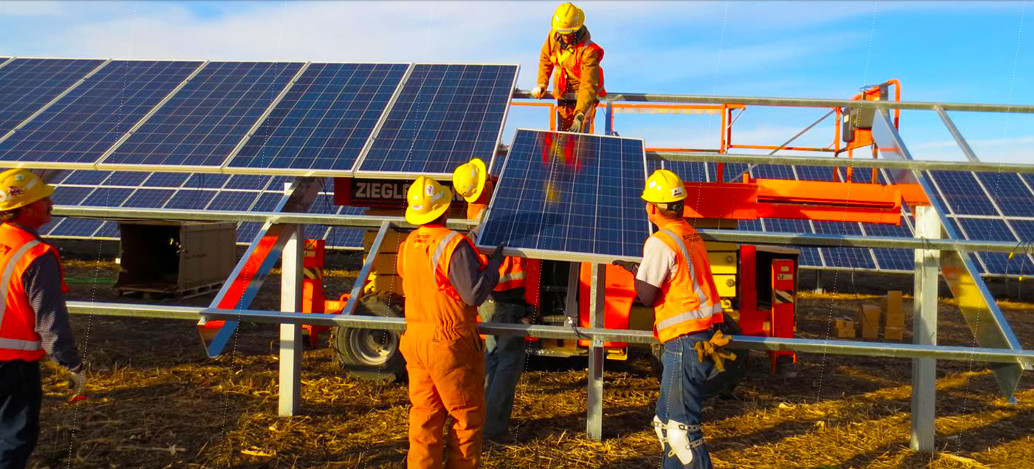Retaining its Q1 2017 assumptions that China will retain its role as the key driver as its 2017 demand reaches 31.5 GW, accounting for 39% of the global market, GTM Research’s latest quarterly report shows that the 2017 global demand will exceed 80 GW for the first time, though year-on-year growth will fall from 55% in 2016 to a more sustainable 4%. Moreover, a demand growth of 6%-8% per year is expected from 2019 as recently tendered projects reach completion and new markets take off, reads the report titled Global Solar Demand Monitor.
Tendering or auction schemes in place, under discussion or in planning stages
According to GTM Research, tendering or auction schemes are currently in place in 48 markets, and an additional 27 nations are currently discussing or planning tenders and auctions.
Out of a total of 17.4 GW already confirmed in tenders between Q2 and the end of 2019, Europe accounts for 8.1 GW, followed by South Asia with 3 GW and MENAT with 2.6 GW, finds the report, noting that the total amount includes 5.3 GW of technology-neutral auctions, in which solar will compete against wind and other sources; but does not include auctions such as the SDE+ in the Netherlands, where no specific volume of capacity is on offer (rather, a total subsidy budget is set).
“Mature solar markets including Germany, Japan and the U.K. have used competitive procurement as a market-capping mechanism to remedy subsidy budget deficits, market saturation, curtailment and grid-balancing issues and high costs,” says Ben Attia, GTM Research solar analyst and lead author of the report.
Meanwhile, the tender pipeline will continue to grow, with three determining factors involved: other countries such as Algeria, Japan and Italy in the process of setting-up tenders for utility-scale capacity, whose volumes or timings are yet to be confirmed; India’s tenders confirmed at short notice, such as TANGEDCO’s 1.5 GW tender confirmed in May with bids to be submitted only a month later; and the timing of China’s Top Runner program Round 3, which is to auction between 8 and 10 GW of new capacity, still not confirmed.
“High-growth markets like India and Mexico have used the same mechanisms as a scale-up engine to centrally allocate projects on weaker grids, provide credit and offtaker guarantees or assurances, and create a low-cost, no-subsidy multi-gigawatt pipeline,” Attia says.
Popular content
Tender policies are consequently creating significant utility-scale pipeline and previously unestablished demand regions of North America, Europe and East Asia are making their presence known on the world solar map. Namely, Argentina, Brazil and Mexico in Latin America will each grow with a CAGR of over 90% between 2016 and 2022, Algeria and Saudi Arabia will be the engines of demand growth in the MENAT region, driven by multi-gigawatt large-scale tendering programs, and in Southeast Asia, the Philippines will add 6.3 GW of solar PV between 2017 and 2022, reads the report.
Therefore, GTM Research states that solar is on its way to break another record as it is projected to install a total of 871 GW of capacity by 2022, rising from just 301 GW at the end of 2016, and for the first time ever overtake wind, which is expected to be at 828 GW by 2022.
The big four
As oversupply persists, but to a less dangerous degree, and the module price slide continues through 2017, China, the United States, India and Japan will remain the world’s top four markets, GTM Research states.
The four are set to account for 75% of total demand in 2017, 2 % up from the Q1 estimates, whereas the expectations are unchanged that India will overtake Japan as the third-largest global market, installing 9.4 GW compared to Japan’s 7.1 GW. However, the dominance of the majors is expected to wane as new 1+ GW markets are emerging in multiple regions, driving down their total demand to 48% in 2022.
This content is protected by copyright and may not be reused. If you want to cooperate with us and would like to reuse some of our content, please contact: editors@pv-magazine.com.



By submitting this form you agree to pv magazine using your data for the purposes of publishing your comment.
Your personal data will only be disclosed or otherwise transmitted to third parties for the purposes of spam filtering or if this is necessary for technical maintenance of the website. Any other transfer to third parties will not take place unless this is justified on the basis of applicable data protection regulations or if pv magazine is legally obliged to do so.
You may revoke this consent at any time with effect for the future, in which case your personal data will be deleted immediately. Otherwise, your data will be deleted if pv magazine has processed your request or the purpose of data storage is fulfilled.
Further information on data privacy can be found in our Data Protection Policy.